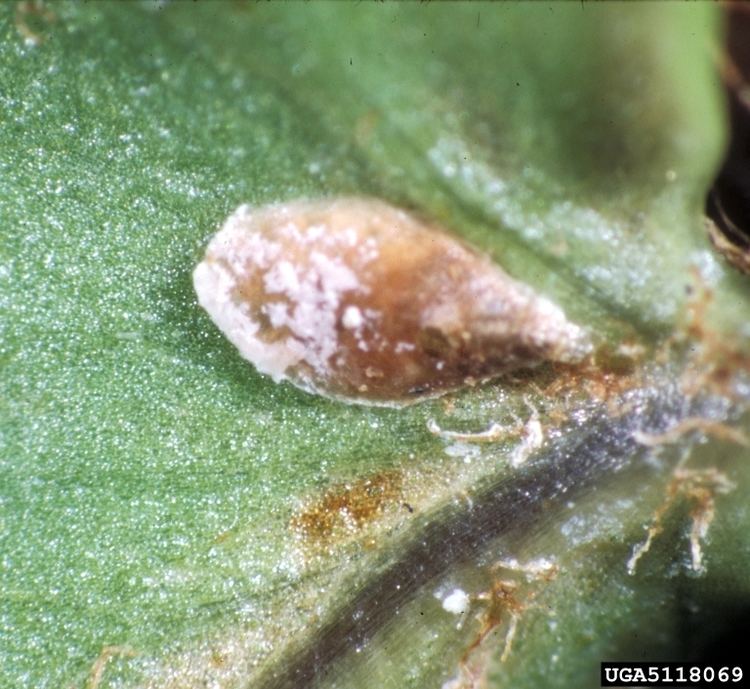Scientific name Pinnaspis Rank Genus | ||
 | ||
Similar Insect, Scale insect, Diaspididae, True bugs, Chrysomphalus | ||
Pinnaspis, first described by Cockerell 1892, is a genus of scale insects belonging to the family Diaspididae, or armored scale insects. There are currently 42 species within the genus Pinnaspis
Contents
Description
In this genus the median lobes are parallel and united by a medial zygosis. 2-barred macroducts, a bi-lobed or absent second lobe, and gland spines, rather than fringed plates between pygidial lobes, and lobbed pre-pygidial abdominal segments are characteristic of Pinnaspis
Biology
Like all members of the family Diaspididae in Pinnaspis the females are primarily sessile molting twice before reaching the adult stage. The first instar, referred to as a crawler, due to the presence of small legs and the dispersal function of this stage. The second instar and adult female lack legs and wings, and have greatly reduced to absent antenna and eyes. A protective covering of wax is produced by the first and second instars and the adult female. The male undergoes four molts before reaching the adult stage, which is legged, winged, and has antenna and eyes. The species Pinnaspis buxi is thought to be parthonogentic, as male scales have not been found.
Distribution
The genus Pinnaspis most likely originated in Asia, with the highest diversity of species found in Asia Three species, Pinnaspis aspidistrae, the fern scale, Pinnaspis buxi, the boxwood scale, and Pinnaspis strachani, the lesser snow scale have widespread cosmopolitan distributions. These three species can be found on every continent but antarctica.
Importance
Many species that fall within Pinnaspis are not pests, but the genus includes some serious pests. Pinnaspis aspidistrae and Pinnaspis strachani have been identified as serious pests. Both are P. aspidistrae and P. strachani are considered polyphagous. P. aspidistrae is recorded to feed on around 60 genera, including, Citrus, and several types of ferns. P. strachani is recorded to feed on over 60 genera, most commonly found on, Citrus, Cocus, and Hibiscus. Pinnaspis buxi is also considered a pest, though not as serious a pest as P. aspidistrae or P. strachani.
